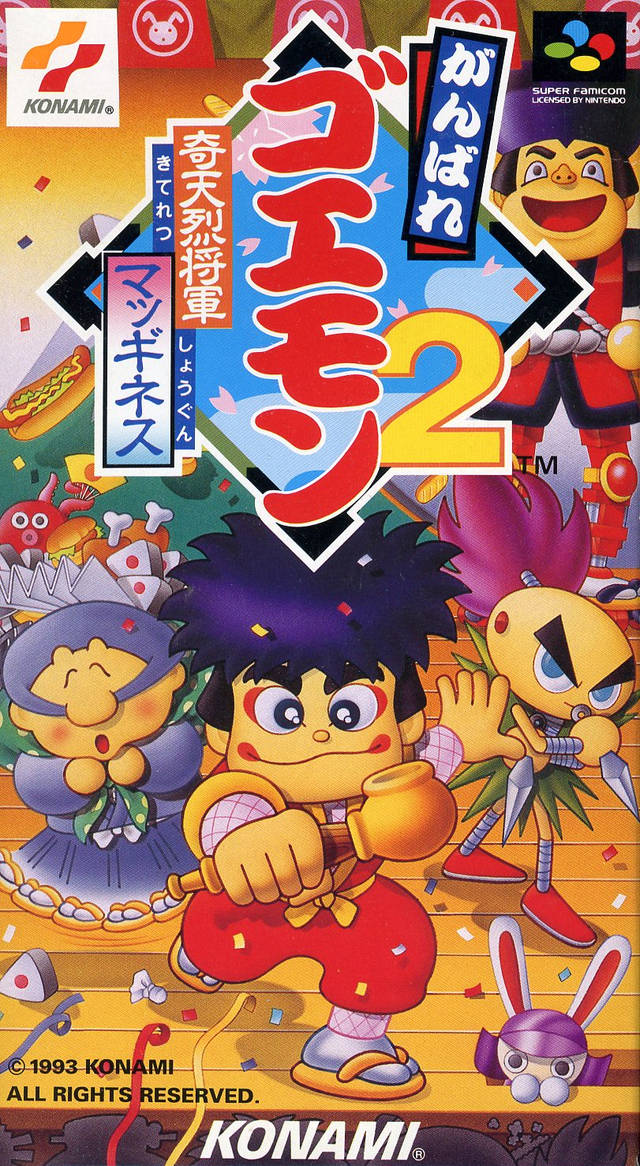

It’s not quite as cool as the levels from Gradius or Xexex in previous games, but it’s a nice throwback. And if you unlock all of the secrets in the game, you can play Time Pilot ’95, a rejuvenation of Konami’s old arcade classic. All of these can be played with four players as well. The final boss battle has Seppukumaru tossing mini-Death Stars towards Earth, and you have to catch them and throw them back. You have to catch his sword as he falls before he slices you in half. By far the coolest (and hardest) is the bungee jump game – Impact is stationed on the ground, and an enemy mecha bungee jumps from lower orbit. One of the better games lets you play Taisen Puzzle-dama, Konami’s answer to Puyo Puyo. Some are lame, like a quiz game and a Track & Field ripoff. The first-person Impact fights are gone, and now each boss has their own mini-game.

This is a 24 meg game – huge for a non-RPG title – which accounts for the tremendous visuals. Konami also added some voice clips for the gang, as well as some insanely catchy music with extraordinarily high sound quality. While the character sprites are the same as in Goemon 3, the backgrounds are some of the system’s best. There are some town segments with minor puzzles to solve, which are annoying if you don’t know Japanese, but are a relatively minor impediment. The levels are fairly short, though, and there aren’t as many as Goemon 2.

You’ll still need to gather special powers for your characters, retaining some of the adventure game feel. Each character is marooned on their own planet, and these must be conquered separately before your team can reunite. This game reintroduces the stage select from Goemon 2. (“Harakiri” and “seppuku” are both methods of ritual suicide.) Unable to let his followers down, Impact flies his friend into outer space to save the day. Mistaking him for their leader, they begin to worship him, but the planet is soon attacked by the devious Harakiri Seppukumaru. The Goemon Impact shows on the doorstep and learns of a planet filled with people that look just like him. So, I popped it in, and…whaddaya know, it WAS a Goemon game! …Except he was called Kid Ying.The fourth Super Famicom Goemon game – “The Glittering Journey: The Reason I Became a Dancer” – is the best of all of the Mystical Ninja games. It was this game! And I was like, ‘Oh, thanks.!’ not wanting to be ungrateful. Well, months later, mom got me a present, knowing I loved the series. That…didn’t look like Goemon at all! What was this? It looked like some dumb hardcore game from what I could see! Dejected, I gave up and left, not even stopping to ask about it. Instead, I leaned over the counter to peek at the cartridge, and I was greeted with…this. Well, one day, I went in, and I saw the SNES was on a title screen for ‘The Legend of the Mystical Ninja’! I flipped out! I ran over to the counter, and all the employees were busy, so I couldn’t ask to play it. Well, one day, I was at the local game store, McVan’s, and they had demo systems they would change the games in every week or so. As a kid (and now, obviously) I was a huge fan of Mystical Ninja, and I had all the English releases. The Legend of the Mystical Ninja, 1991/92 Ganbare Goemon: Yukihime Kyuushutsu Emaki VS.


 0 kommentar(er)
0 kommentar(er)
